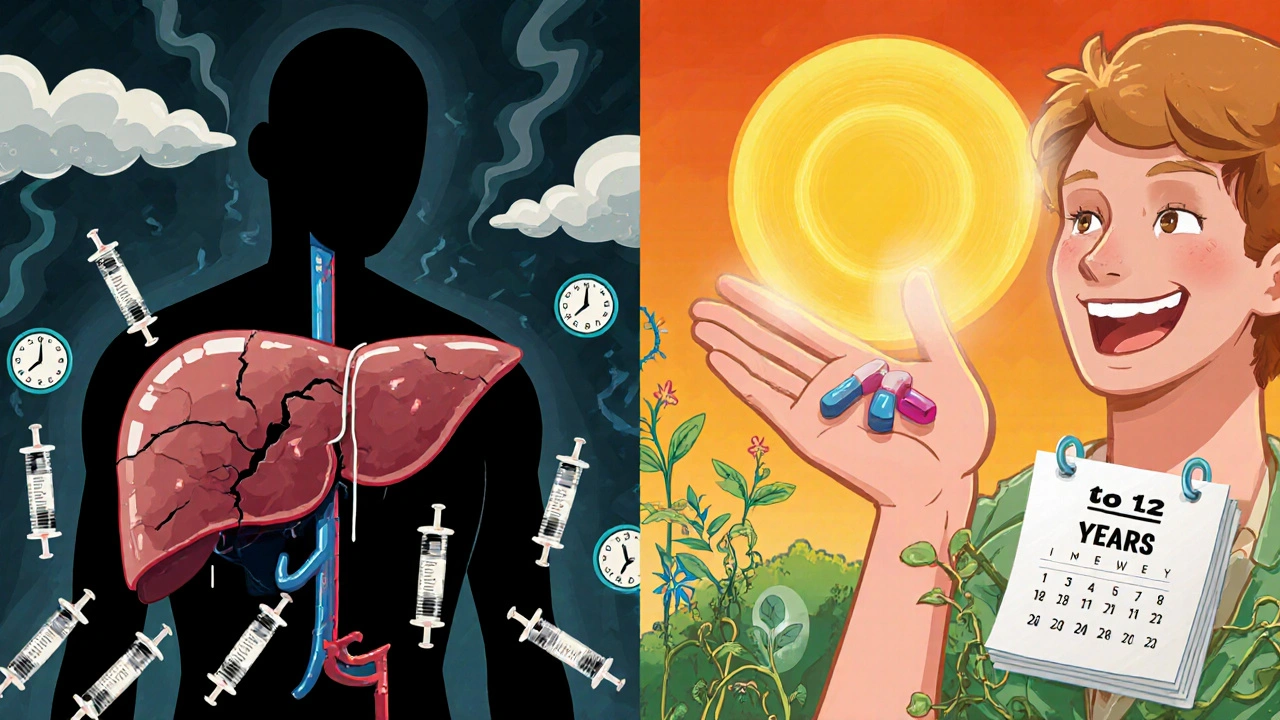SVR Rates: What They Mean and Why They Matter in Hepatitis C Treatment
When doctors talk about curing hepatitis C, they don’t say "you’re better"—they say SVR rates, Sustained Virologic Response, the measurable outcome that proves the virus is gone from the blood after treatment ends. Also known as cure rate, it’s the only number that truly matters when evaluating modern hepatitis C drugs. If you hit SVR, the virus is undetectable in your blood 12 or 24 weeks after finishing treatment. That’s not remission. That’s cure.
SVR rates aren’t just a medical term—they’re life-changing data. Back in the interferon days, fewer than half of patients reached SVR. Today, with direct-acting antivirals like sofosbuvir and glecaprevir, more than 95% of people clear the virus. That shift didn’t happen by accident. It came from years of research, clinical trials, and real-world tracking of who stayed virus-free. These numbers are why we can now talk about eliminating hepatitis C as a public health threat.
But SVR isn’t the same for everyone. Factors like your hepatitis C genotype, whether you’ve had treatment before, if you have cirrhosis, or even how well you took your pills can affect your odds. A person with genotype 1 and no liver damage might have a 98% chance of SVR. Someone with genotype 3 and advanced cirrhosis might be closer to 90%. That’s why doctors don’t just give you a drug and hope—they use SVR data to pick the right combo for you.
And it’s not just about the drug. SVR rates are tied to how we test, when we test, and even how we define success. Some studies use 12 weeks post-treatment (SVR12), others go to 24 weeks (SVR24). For most people today, SVR12 is enough. But in tricky cases—like people with liver transplants or those who didn’t respond before—doctors may wait longer to be sure.
SVR rates also connect to other health outcomes. People who reach SVR don’t just feel better—they live longer. Liver scarring slows or even reverses. The risk of liver cancer drops by over 70%. Even mental health improves. Depression and fatigue, common with chronic hepatitis C, often fade once the virus is gone.
You’ll find posts here that dig into how these treatments work, what side effects you might face, and how to make sure you get the best shot at SVR. Some talk about drug interactions that could mess with your cure. Others explain why generic versions now make SVR possible for millions who couldn’t afford it before. There are even pieces on how genetic testing helps predict who responds best.
What you won’t find is fluff. No vague promises. Just real data, real stories, and real guidance on how to get from diagnosis to SVR—and stay there for good.

Hepatitis C Cure Rates With Direct-Acting Antivirals: What You Need to Know
- by Colin Edward Egan
- on 17 Nov 2025
Hepatitis C can now be cured in 8-12 weeks with over 95% success using direct-acting antivirals. Learn how DAAs work, who benefits most, and why so many still go untreated.
